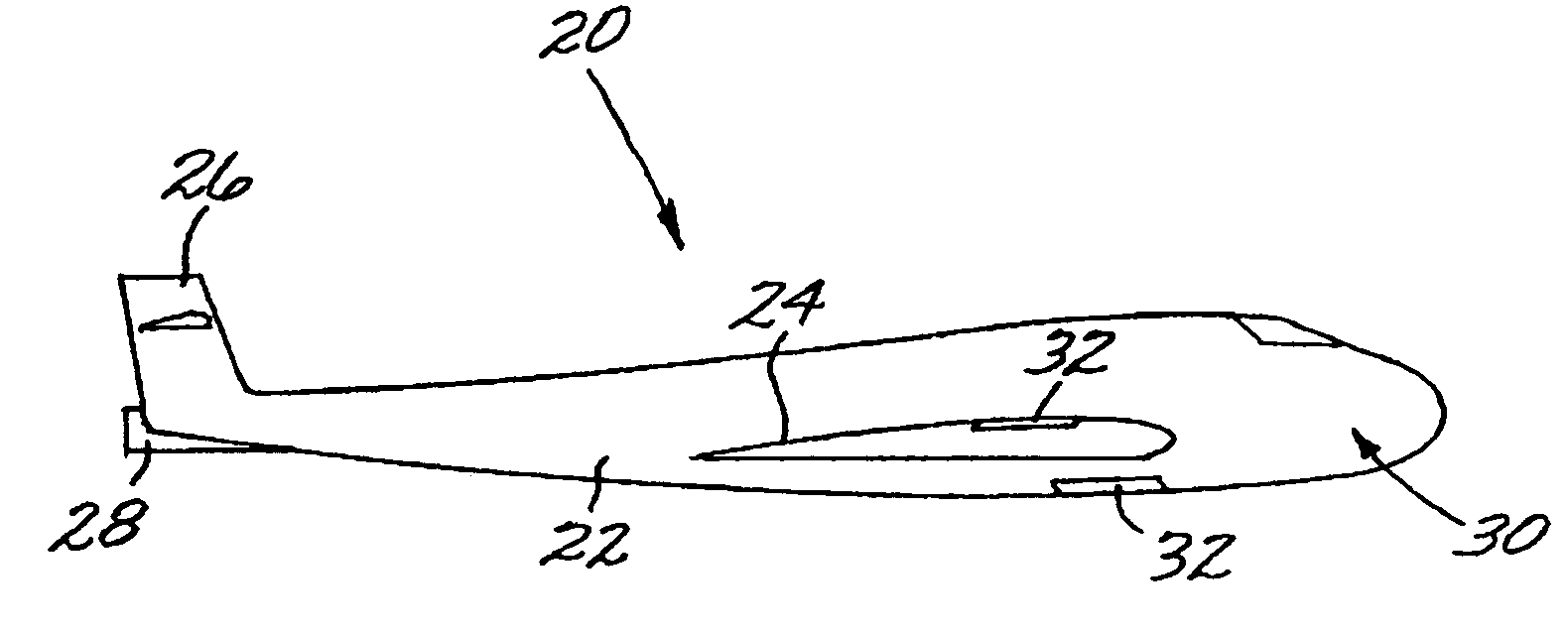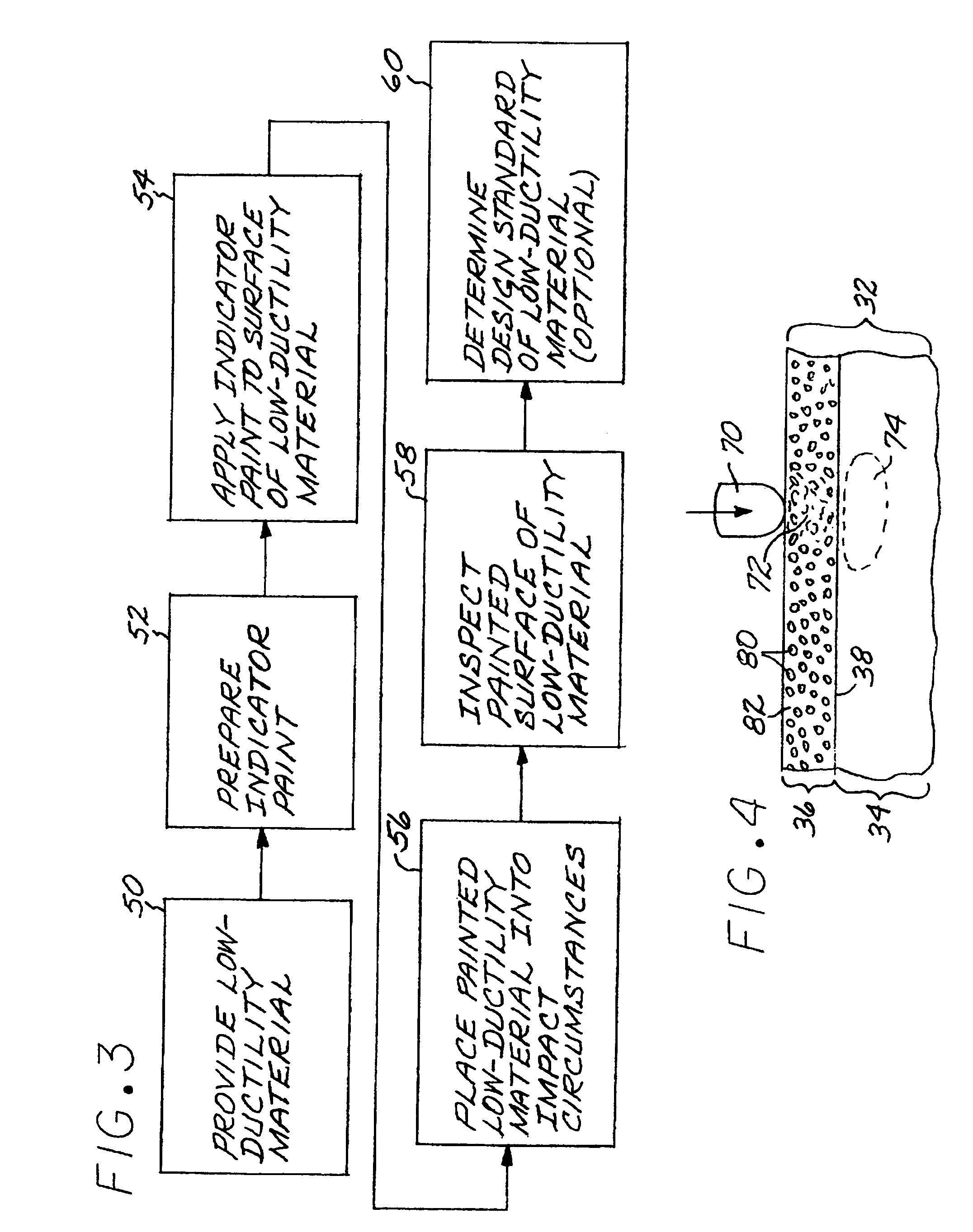Approach for indicating the occurrence of a mechanical impact on a material, such as a low-ductility composite material
a composite material and mechanical impact technology, applied in the field of composite materials, can solve the problem of low degree of mechanical impact sensitive methods, achieve the effects of improving inspection techniques, easy detection, and good adhesion of paint to surfaces
- Summary
- Abstract
- Description
- Claims
- Application Information
AI Technical Summary
Benefits of technology
Problems solved by technology
Method used
Image
Examples
Embodiment Construction
[0022]FIG. 1 depicts an aircraft 20 having a fuselage 22, a wing 24 attached to the fuselage 22, a tail 26 attached to the fuselage 22, and an engine 28 within the fuselage 22 (or which may be supported externally from some part of the fuselage 22, the wing 24, or the tail 26). Portions of an external surface 30 of the fuselage 22, the wing 24, or the tail 26 may be made of pieces, termed “panels”32 herein, of a material such as a low-ductility material, two of which panels are shown by way of example. Other portions of the aircraft 20, such as internal structure not visible in FIG. 1, may also be made of the low-ductility material. The preferred application of the present approach is in relation to such a low-ductility material. The remainder of the discussion will focus on the use with the low-ductility material, with the understanding that the present approach is applicable to higher-ductility materials as well.
[0023]FIG. 2 illustrates a portion of one of the panels 32 made of th...
PUM
| Property | Measurement | Unit |
|---|---|---|
| tensile elongation to failure | aaaaa | aaaaa |
| thick | aaaaa | aaaaa |
| tensile strength | aaaaa | aaaaa |
Abstract
Description
Claims
Application Information
 Login to View More
Login to View More - R&D
- Intellectual Property
- Life Sciences
- Materials
- Tech Scout
- Unparalleled Data Quality
- Higher Quality Content
- 60% Fewer Hallucinations
Browse by: Latest US Patents, China's latest patents, Technical Efficacy Thesaurus, Application Domain, Technology Topic, Popular Technical Reports.
© 2025 PatSnap. All rights reserved.Legal|Privacy policy|Modern Slavery Act Transparency Statement|Sitemap|About US| Contact US: help@patsnap.com



